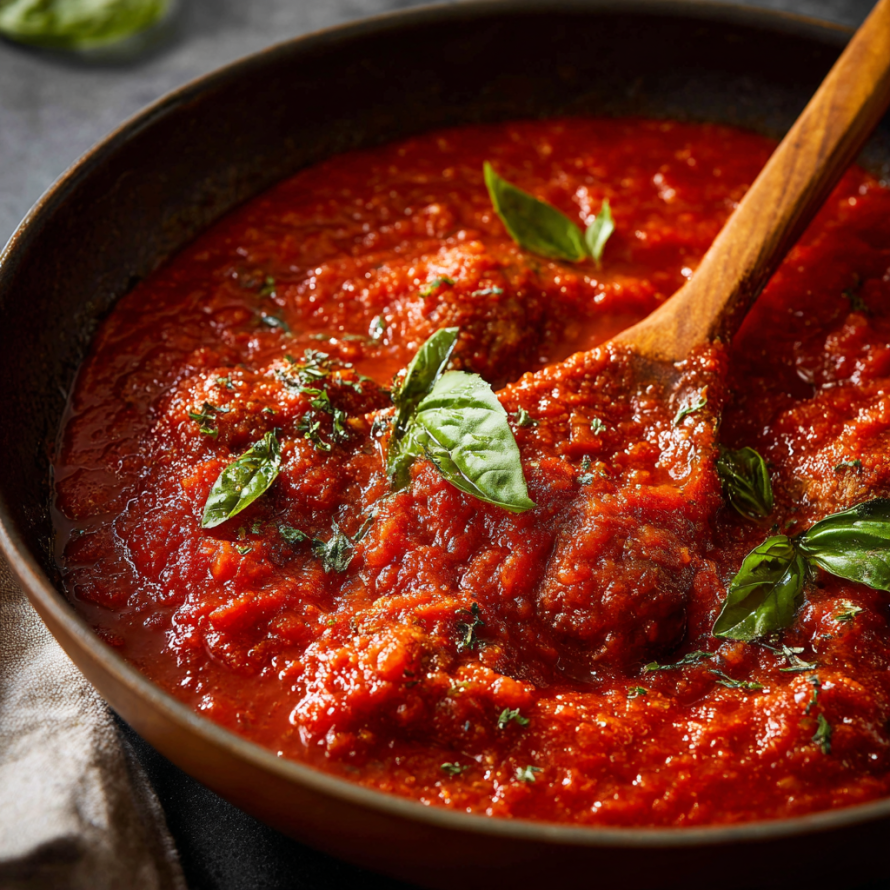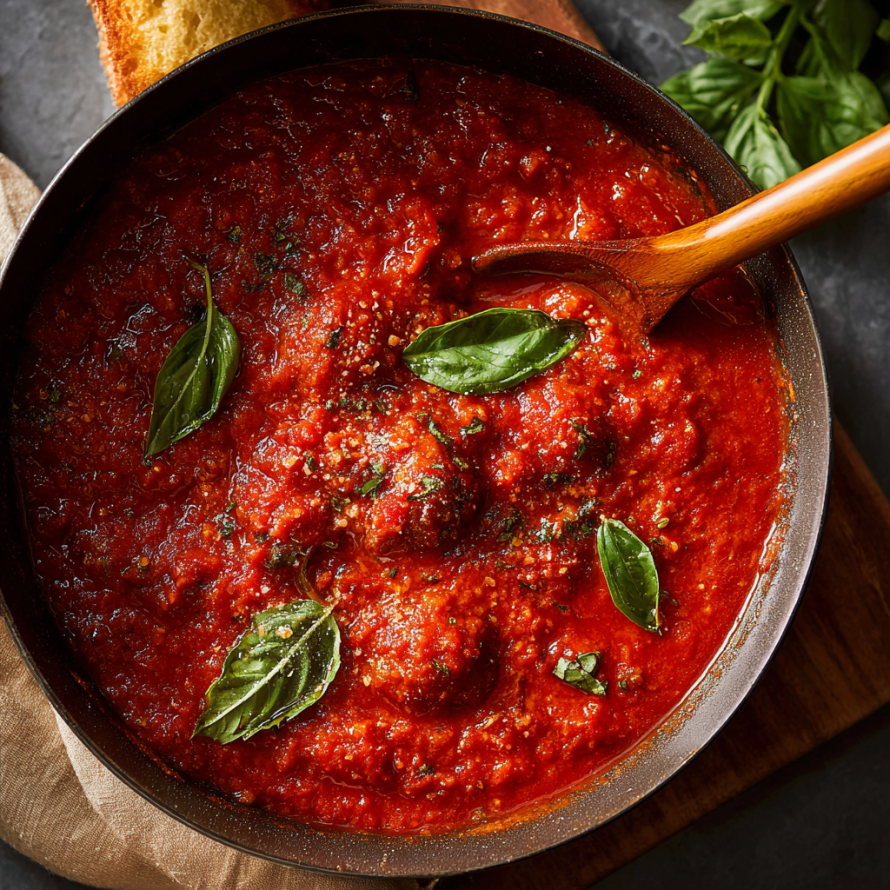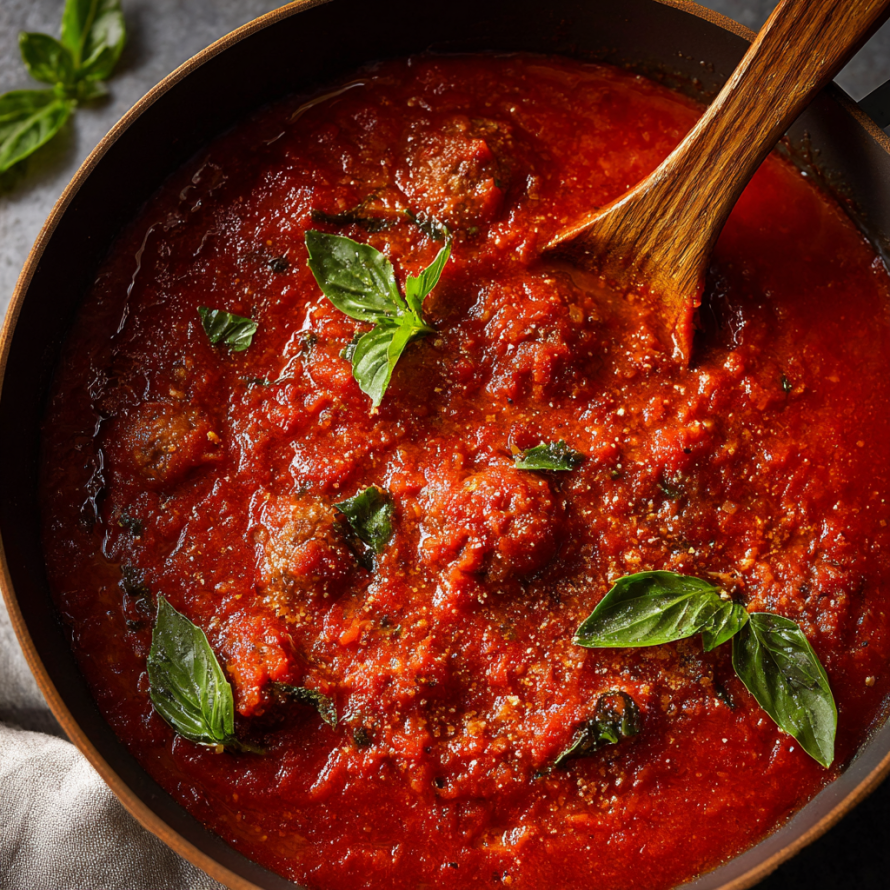 Pin it
Pin it
Some pots of sauce simmer all day but this Italian Sunday Sauce is so much more than marinara. This is the ultimate celebration of family and tradition transforming humble ingredients and a variety of meats into a rich tomato masterpiece that fills your whole home with impossible-to-resist aromas. It takes time but that slow bubbling is what makes the flavor unforgettable for Sunday dinner or any gathering where you want everyone to feel at home.
I first learned to make this as a newlywed and now it is the smell that brings my kids running down the stairs. No two pots taste exactly the same and that is part of the magic.
Ingredients
- Italian sausage braciole ribs or meatballs: A mix gives a complex flavor each meat brings something unique. Choose high-quality fresh cuts with some marbling for the best taste
- Extra virgin olive oil: The base of the sauce look for a fresh peppery oil for the most authentic flavor
- Garlic: About eight cloves thinly sliced and sautéed. Low and slow cooking removes sharpness for a sweet background note
- Tomato paste: Gives body and sweetness to the sauce. Always caramelize it to boost the flavor
- San Marzano tomatoes: Three cans whole or crushed. These have the right balance of acidity and natural sweetness. Always check for a DOP marker if possible
- Fresh basil: Brightens and freshens the tomato base. Add at different stages for layers of herby flavor
- Salt: Add little by little and taste as you go. This lets the sauce build depth without getting too salty
- Optional additions: Grated Parmesan rind for richness a fresh bay leaf for fragrance and fresh parsley for a final green note
Instructions
- Brown the Meats:
- Start with a roomy stockpot or Dutch oven. Heat it over medium until hot. Sear each kind of meat for several minutes per side turning to build deep brown color on all surfaces. The brown bits left in the pan are pure flavor. Remove all the meat and set on a plate
- Saute the Garlic:
- With meats set aside lower heat and add generous olive oil. Add thinly sliced garlic stirring constantly for about one minute until just golden and fragrant. Do not let it brown or the flavor can turn bitter
- Add Tomato Paste:
- Push the sautéed garlic towards the edges of the pot. Add tomato paste into the center. Stir and let it cook undisturbed a few minutes until it deepens in color and begins to smell sweet. Scrape and fold so nothing sticks or burns
- Add Tomatoes and Basil:
- Pour in the crushed or whole tomatoes. Break up whole tomatoes by hand or with a spoon. Stir in half the basil. Sprinkle with salt. Taste and adjust as needed. Let everything come up to a gentle simmer
- Return the Meats:
- Nestle all browned meats back into the simmering tomato mixture. Spoon sauce over to coat and tuck them down slightly. Add Parmesan rind and bay leaf if using
- Simmer Low and Slow:
- Turn the heat low. Cover with the lid slightly askew. Let the pot simmer for at least three hours. Stir occasionally scraping along the bottom to prevent sticking. The sauce will thicken and change from bright red to a much deeper color
- Finish the Sauce:
- Near the end of cooking stir in the rest of the fresh basil. Remove and discard Parmesan rind and bay leaf. Take out the meats and either shred or slice them as desired. The sauce can be blended slightly for smoothness or left chunky
- Serve:
- Toss your favorite pasta with a ladleful of sauce. Plate it and top with pieces of the braised meat and extra cheese

The San Marzano tomatoes are my secret weapon. Their gentle sweetness and low seeds mean no bitterness and almost never a need to add sugar. My kids love the ritual of stirring the pot and waiting for the first taste.
Storage Tips
Cool leftovers completely before transferring to airtight storage. The sauce keeps in the fridge up to one week. For longer storage divide into quart containers and freeze. Always label with the date and reheat gently to keep the meats tender.
Ingredient Substitutions
If you cannot find San Marzano tomatoes use the highest quality canned tomatoes available and add an extra pinch of sugar as needed. Use any combination of beef pork or chicken to suit your taste or what is already in your fridge. Fresh parsley or a spoonful of pesto adds brightness in place of basil if needed.
Serving Suggestions
Serve tossed with rigatoni ziti or any sturdy noodle enough to hold up to the hearty meat. A big wedge of crusty Italian bread is ideal to soak up any extra sauce. Sprinkle extra cheese and offer finely chopped fresh herbs at the table.
Cultural and Historical Context
This sauce is known as “gravy” in many Italian American homes. Dating back generations it was a way to stretch expensive meats and feed a crowd. The ritual of Sunday Sauce is as much about togetherness as the food itself people chatting in the kitchen hands busy rolling meatballs and stories passing down with each stirring of the pot.
Seasonal Adaptations
Three tips for making this year round: In summer add a few peeled fresh tomatoes for brightness. In winter bulk up with extra ribs or meatballs for comfort. For spring stir in baby spinach at the end for a hit of green.
Success Stories
I have heard from friends who doubled the recipe for holidays and still did not have leftovers. One neighbor spent a whole afternoon simmering sauce as a kitchen date and now it is their anniversary tradition. There are few recipes that make everyone feel welcome and this one does it every time.
Freezer Meal Conversion
Portion the sauce and meats into family or single serve containers and freeze for up to three months. Thaw overnight in the fridge and reheat gently so the meat stays soft and juicy. This method helps me always have comfort food on hand for busy weeks.

This recipe brings everyone to the table and always tastes like home. Each pot is unique and that is the real beauty of Italian Sunday Sauce.
Recipe FAQs
- → What kinds of meats are best for this sauce?
Italian sausage, homemade meatballs, country-style ribs, and braciole work well, but you can use any cut you love for rich flavor and tenderness.
- → Why is caramelizing tomato paste important?
Caramelizing tomato paste deepens its sweetness and adds umami, enhancing the sauce's complexity and richness.
- → How long should the sauce simmer?
Allow at least 3 hours for gentle simmering on low heat. Longer cooking improves the taste and lets flavors blend beautifully.
- → Can I freeze leftover sauce?
Yes, cool the sauce completely, then store in airtight containers for up to 3 months. Thaw and reheat gently before serving.
- → What pasta pairs best with this sauce?
Sturdy pastas like rigatoni, ziti, or spaghetti hold up well to the rich, chunky sauce and complement the hearty meats.
- → Is it necessary to add Parmesan rind?
Adding Parmesan rind is optional but provides extra depth and savory notes to the finished sauce.
